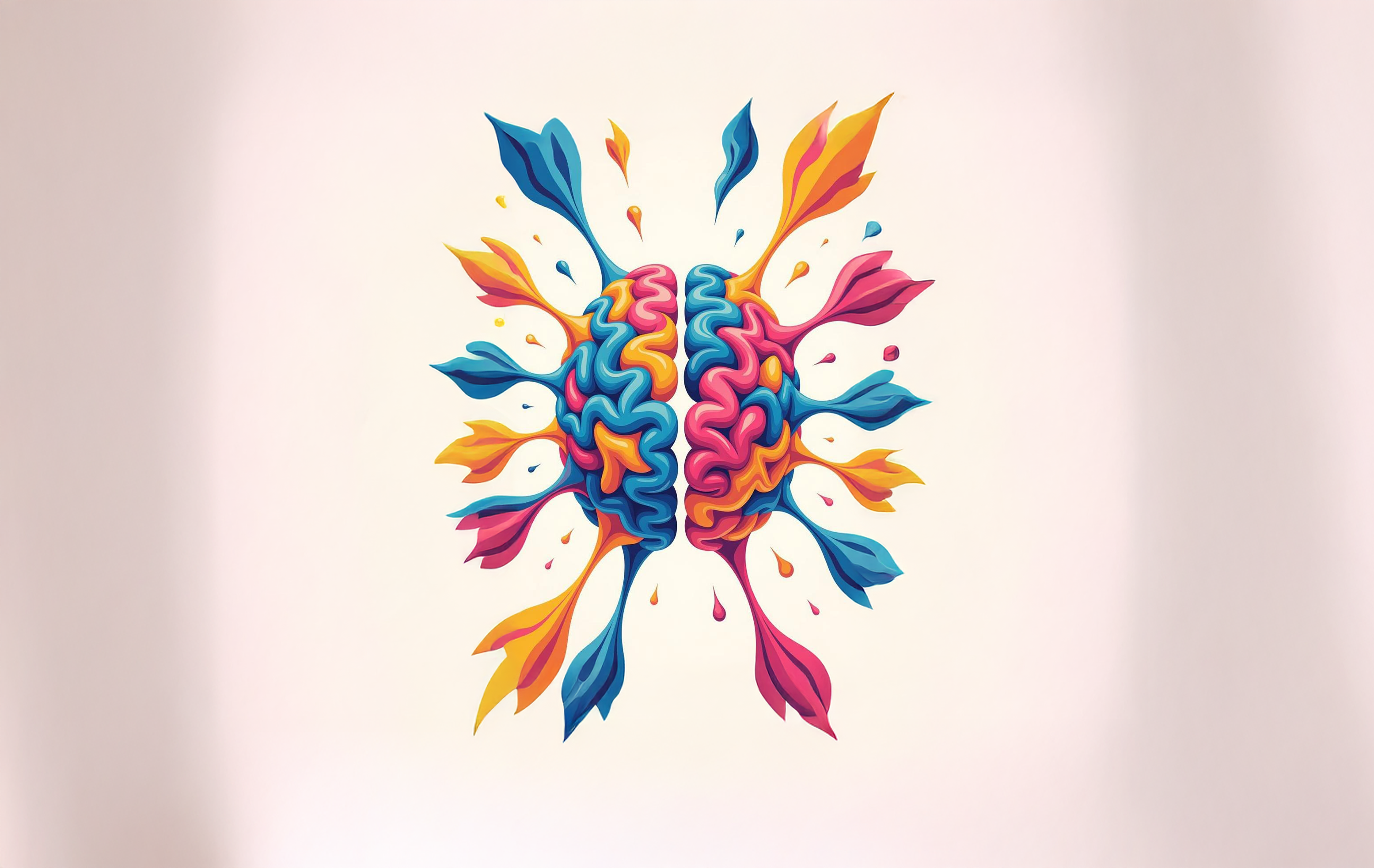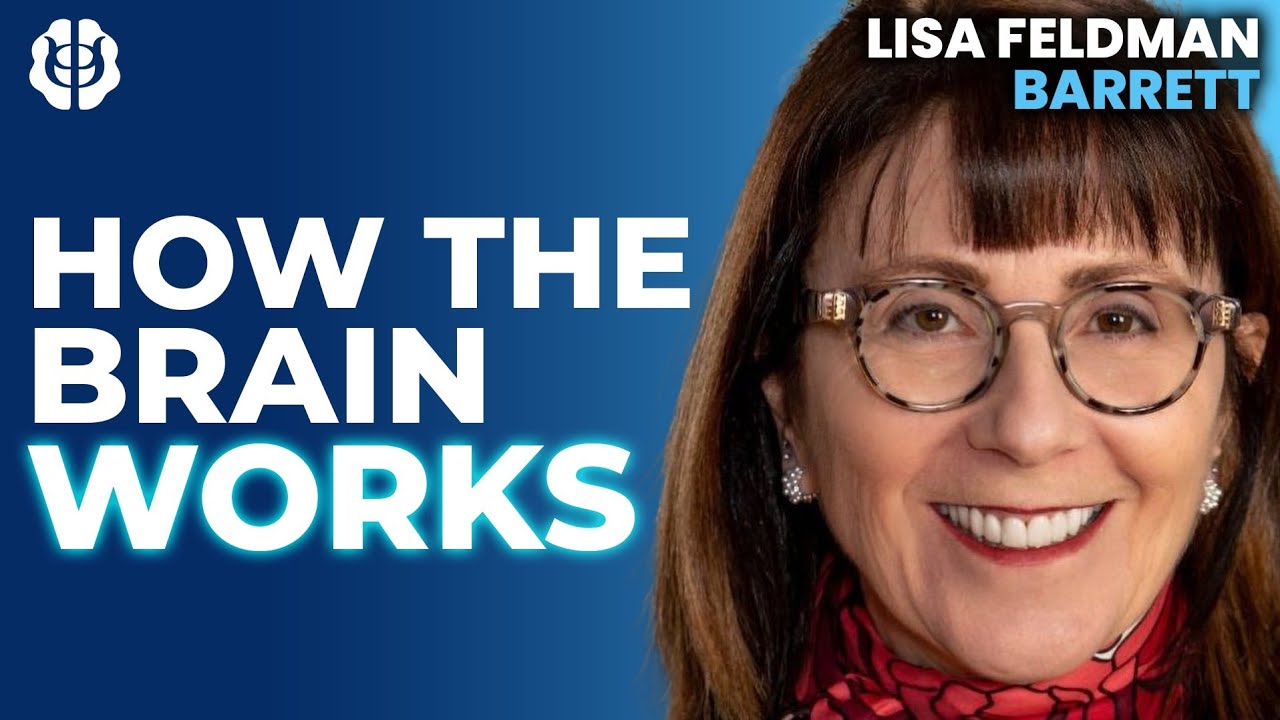Perception vs. Reality: How Our Brains Construct the World

Welcome to a deeper dive into the fascinating world of perception and reality. In this blog post, we'll explore how our brains actively construct our experience of the world, rather than passively receiving it. This understanding has profound implications for how we perceive ourselves, others, and the very fabric of reality. We'll be drawing heavily from the groundbreaking work of Lisa Feldman Barrett, whose insights have revolutionized our understanding of the brain and its function. This discussion complements our latest podcast episode, Lisa Feldman Barrett: How Do Brains Work? How Emotions are Made & the Derivation of Meaning, where we had the privilege of discussing these concepts directly with Dr. Barrett. We encourage you to listen to the episode for a more comprehensive understanding of the subject. Prepare to question everything you thought you knew about reality!
Introduction: The Illusion of Reality
We often assume that what we see, hear, and feel is a direct representation of the world around us. We believe that our senses act like a camera, faithfully recording reality as it is. However, modern neuroscience reveals a much more complex and nuanced picture. Our brains don't passively receive information; they actively construct our experience, constantly predicting, interpreting, and shaping what we perceive. This means that what we experience as "reality" is, in fact, a highly personalized and subjective construction.
Think about optical illusions. They vividly demonstrate how our brains can be tricked into seeing things that aren't actually there, or misinterpreting what is. These illusions aren't just quirky anomalies; they highlight the fundamental way our brains operate – by making inferences and filling in gaps based on past experiences and expectations. The reality we perceive is a carefully crafted illusion, one that is remarkably effective in helping us navigate the world, but an illusion nonetheless.
Meet Lisa Feldman Barrett: Unpacking Her Expertise
Lisa Feldman Barrett is a leading figure in the field of affective science, cognitive neuroscience, and psychology. A Distinguished Professor of Psychology at Northeastern University, she is renowned for her research on emotion, the brain, and the construction of reality. Dr. Barrett challenges traditional views of emotions as innate, hardwired responses, arguing instead that emotions are constructed by the brain based on past experiences, current context, and bodily sensations. Her groundbreaking work has earned her numerous accolades and has significantly impacted our understanding of the human mind. As mentioned previously, you can find her insightful views in our recent podcast here.
Her books, including "How Emotions Are Made: The Secret Life of the Brain" and "Seven and a Half Lessons About the Brain," offer accessible explanations of complex neuroscience concepts and provide a compelling case for the brain's active role in shaping our reality. Her TED Talk, with over 6 million views, further highlights her ability to communicate complex ideas in an engaging and thought-provoking manner. Her research provides a robust foundation for understanding the concepts we will be discussing in this post.
Consciousness and the Brain's Construction of Reality
Consciousness itself is a deeply debated topic, and understanding how the brain constructs reality is intertwined with our understanding of consciousness. One way to think about consciousness is as a complex orchestration of neural processes that allow us to be aware of ourselves and our surroundings. However, this awareness is not a passive recording of reality, but rather an active interpretation and construction. Our brains are constantly making predictions about what will happen next, and these predictions shape our conscious experience.
The brain uses past experiences to create internal models of the world. These models are constantly updated and refined based on incoming sensory information. When sensory input matches the brain's predictions, our experience feels smooth and seamless. However, when there is a mismatch between prediction and reality, the brain works to resolve the discrepancy, leading to a conscious awareness of something "new" or unexpected. This constant process of prediction and error correction is what allows us to navigate the world and learn from our experiences. This also implies that our conscious experience is not a direct reflection of reality, but rather a filtered and interpreted version, heavily influenced by our past experiences and expectations.
Perception vs. Reality: What Are We Actually Seeing?
The traditional view of perception assumes that our senses act as unbiased receivers, transmitting information directly from the external world to our brains. However, this is a misconception. Our sensory organs only provide raw data, and it is the brain that interprets and gives meaning to this data. The brain actively filters, organizes, and synthesizes sensory information, creating a coherent and meaningful representation of the world.
Consider the phenomenon of color perception. The light that enters our eyes is composed of different wavelengths, but it is our brains that transform these wavelengths into the colors we perceive. Color perception is not a fixed property of objects, but rather a subjective experience created by our brains. Similarly, our perception of depth, distance, and motion is also actively constructed by the brain, based on cues and inferences derived from sensory input and past experiences. What we "see" is not a faithful representation of reality, but rather a brain-constructed interpretation that is tailored to our individual needs and experiences.
The Bayesian Brain: How Our Brains Make Predictions
The Bayesian brain hypothesis suggests that our brains function as sophisticated prediction machines, constantly making predictions about the future and updating these predictions based on new evidence. This process is based on Bayesian inference, a statistical method that allows us to update our beliefs in light of new information.
In the context of perception, the Bayesian brain uses prior beliefs (based on past experiences) to generate predictions about incoming sensory information. These predictions are then compared to the actual sensory input, and the discrepancy between prediction and reality is used to update our beliefs. This process allows us to learn from our experiences and adapt to changing environments. The Bayesian brain framework provides a powerful explanation for how our brains construct reality by actively predicting and interpreting sensory information, rather than passively receiving it. This predictive processing is essential for navigating the world and making sense of our experiences.
Beyond the Cortex: The Role of the Mid-Brain
While the cortex is often considered the seat of higher-level cognitive functions, the mid-brain plays a crucial role in shaping our perception and behavior. The mid-brain is involved in basic functions such as regulating sleep-wake cycles, attention, and motivation. It also plays a key role in processing sensory information and coordinating motor movements.
The mid-brain's influence on perception is often overlooked, but it is essential for understanding how our brains construct reality. The mid-brain filters sensory information, prioritizing what is relevant and important, and suppressing what is not. This filtering process shapes our attention and influences what we consciously perceive. Furthermore, the mid-brain is involved in generating emotions, which can significantly impact our perception and behavior. By understanding the role of the mid-brain, we gain a more complete picture of the complex neural processes that underlie our perception of reality.
Imposing Meaning: How We Create Value and Function
Our brains don't just construct our perception of the physical world; they also impose meaning and value on objects and events. We don't simply see a chair; we see an object designed for sitting, with a specific purpose and value. This imposition of meaning is a fundamental aspect of human cognition and is essential for our ability to navigate the social and cultural world.
The meaning we assign to objects and events is not inherent in the objects themselves, but rather is a product of our cultural background, personal experiences, and individual goals. We learn to associate certain objects with specific functions and values through social interaction and cultural transmission. This process of meaning-making shapes our perception and behavior, influencing how we interact with the world and with each other. Understanding how we impose meaning and value on objects and events is crucial for understanding human behavior and social dynamics.
Cognitive Dissonance and the Metabolic Costs of Beliefs
Cognitive dissonance refers to the discomfort we experience when holding conflicting beliefs or values. This discomfort motivates us to reduce the dissonance, often by changing our beliefs or behaviors. The phenomenon of cognitive dissonance highlights the brain's drive for consistency and coherence in its internal representations of the world.
Interestingly, maintaining beliefs that are inconsistent with reality can have metabolic costs. Our brains consume a significant amount of energy, and resolving cognitive dissonance requires additional cognitive effort. This suggests that holding onto false beliefs or engaging in self-deception can be energetically expensive for the brain. Understanding the metabolic costs of beliefs provides a new perspective on the importance of accurate perception and the drive for cognitive consistency. It also underscores the potential benefits of challenging our own beliefs and seeking out new information that may challenge our existing worldview.
Why Understanding Perception Matters
Understanding how our brains construct reality has profound implications for our lives. It can help us to better understand ourselves, our relationships, and the world around us. By recognizing that our perception is not a direct reflection of reality, we can become more open to different perspectives and more tolerant of others' beliefs. It can also help us to be more critical of our own biases and assumptions, leading to more informed decision-making.
Furthermore, understanding the constructed nature of reality can have practical applications in fields such as mental health, education, and social justice. For example, it can help us to develop more effective treatments for mental disorders, design more engaging learning environments, and promote greater understanding and empathy between different groups of people. By embracing the idea that reality is a construction, we can unlock new possibilities for personal growth and social change.
Conclusion: Embracing the Constructed Nature of Our World
In conclusion, our brains are not passive receivers of information, but rather active constructors of reality. We constantly predict, interpret, and shape what we perceive, creating a highly personalized and subjective experience of the world. This understanding, informed by the work of pioneers like Lisa Feldman Barrett, has profound implications for how we perceive ourselves, others, and the very nature of reality. By embracing the constructed nature of our world, we can become more open-minded, compassionate, and effective in our lives.
We encourage you to listen to the full discussion on our latest podcast episode, Lisa Feldman Barrett: How Do Brains Work? How Emotions are Made & the Derivation of Meaning, to further explore these fascinating concepts. By challenging our assumptions and embracing new perspectives, we can unlock a deeper understanding of ourselves and the world around us.









